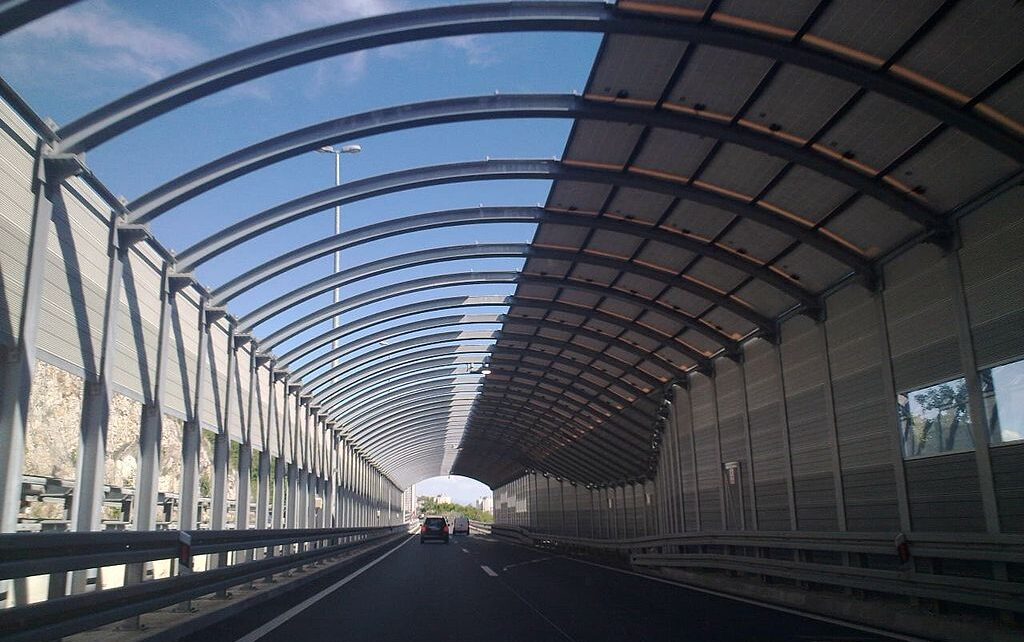Noise pollution has become an increasingly prominent issue in modern times, and transportation is one of the major contributors to this problem. Living near highways and other transportation hubs can be unpleasant due to the excessive noise generated by the constant flow of vehicles. This is not just an inconvenience, but also a serious health concern.
Studies have shown that long-term exposure to high levels of noise pollution can lead to various health issues such as insomnia, hearing loss, and even cardiovascular disease. To address this issue, authorities have been implementing sound barriers for highways and transportation. These barriers, made of materials such as concrete, metal, and wood, are designed to reduce noise levels by deflecting or absorbing the sound waves generated by vehicles.
Understanding the impact of noise
One of the primary concerns related to transportation infrastructure, particularly highways, is the impact of noise pollution on nearby communities. Noise pollution can cause significant health problems such as hearing loss, cardiovascular disease, and sleep disturbances, resulting in decreased quality of life for those living in affected areas. Therefore, understanding the impact of noise is crucial in developing effective sound barriers for highways and transportation. Noise levels are measured in decibels, and exposure to noise levels above 85 decibels for prolonged periods can cause permanent damage.
The frequency of the noise also plays a role in its impact, as low-frequency noise can travel further and penetrate barriers more easily than high-frequency noise. By taking these factors into consideration, transportation planners and policymakers can develop more effective sound barriers to reduce noise pollution and improve the quality of life for nearby communities.
Benefits for nearby communities
One of the key benefits of implementing sound barriers for highways and transportation is the positive impact it can have on nearby communities. Noise pollution from highways can have a range of negative effects on the physical and mental health of residents living nearby.
By reducing noise levels through the installation of sound barriers, communities can experience a significant improvement in their quality of life. This can lead to increased property values, improved local business opportunities, and a more attractive living environment.
Additionally, communities that are located near highways or major transportation routes often experience higher levels of traffic-related air pollution. By reducing noise levels, sound barriers can also have a positive impact on air quality, further contributing to the health and well-being of nearby residents. Overall, the implementation of sound barriers can provide a range of benefits for nearby communities, making them an important consideration for any transportation planning project.
Future of sound barrier technology
The future of sound barrier technology holds a lot of promise for reducing noise pollution from highways and transportation systems. One of the most exciting developments is the use of metamaterials, which are materials engineered to have properties not found in nature.
Metamaterials can bend and manipulate sound waves in ways that traditional materials cannot, allowing them to be used for sound barriers that are not only more effective, but also thinner and lighter than current options.
Advancements in noise cancellation technology have the potential to further reduce noise pollution by actively canceling out sound waves with opposing sound waves. As these technologies continue to develop, they have the potential to greatly benefit nearby communities by reducing the impact of noise pollution from busy highways and transportation systems.
In conclusion, sound barriers for highways and transportation are an effective solution for reducing noise pollution and protecting the quality of life for nearby communities. It is crucial for transportation agencies and governments to prioritize the implementation of these barriers and ensure that they are built with high-quality materials and proper design.
While there may be some initial costs associated with installing sound barriers, the long-term benefits of reduced noise pollution and improved public health and well-being make it a worthwhile investment. By working together to implement sound barriers, we can create a more sustainable and peaceful environment for everyone.





